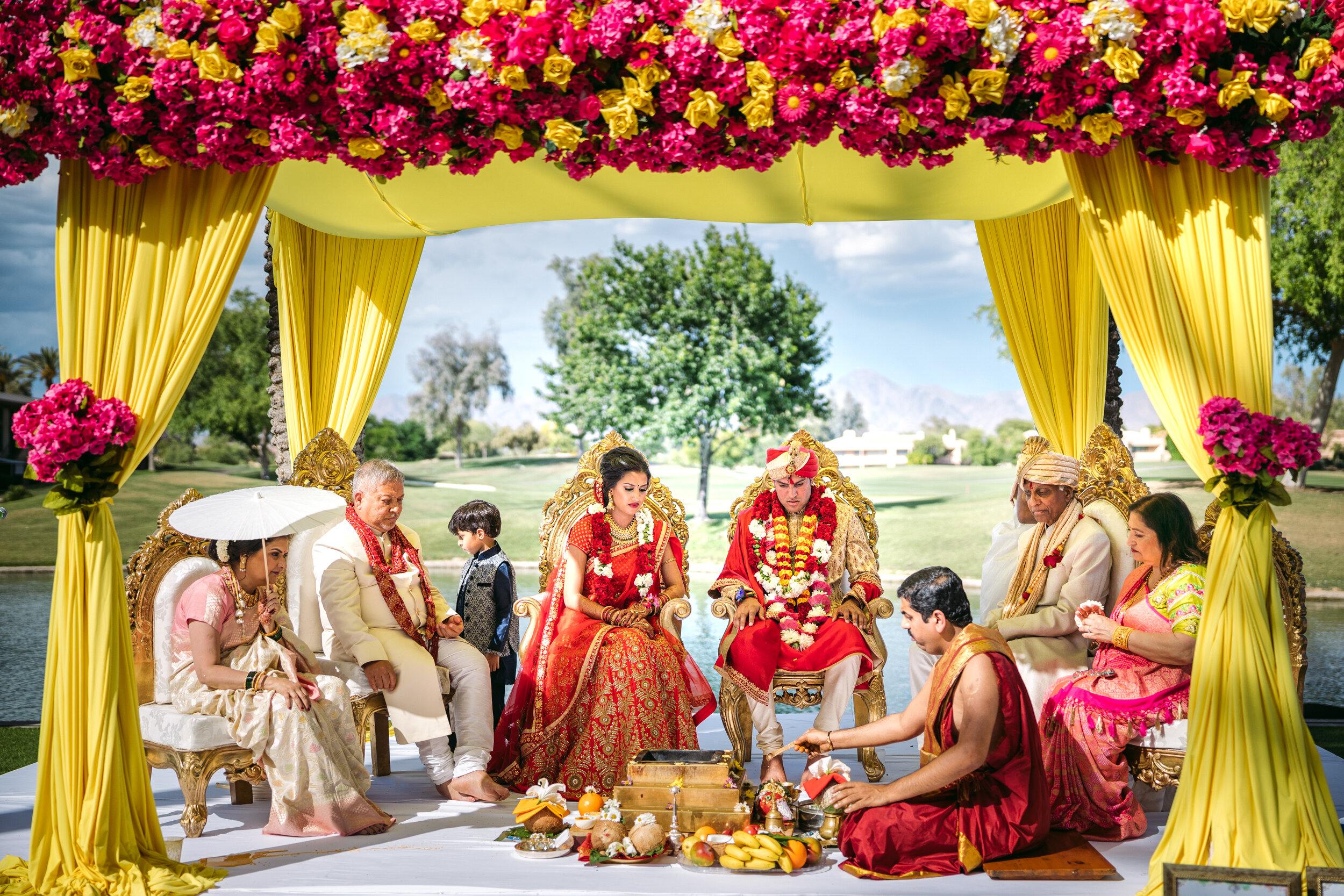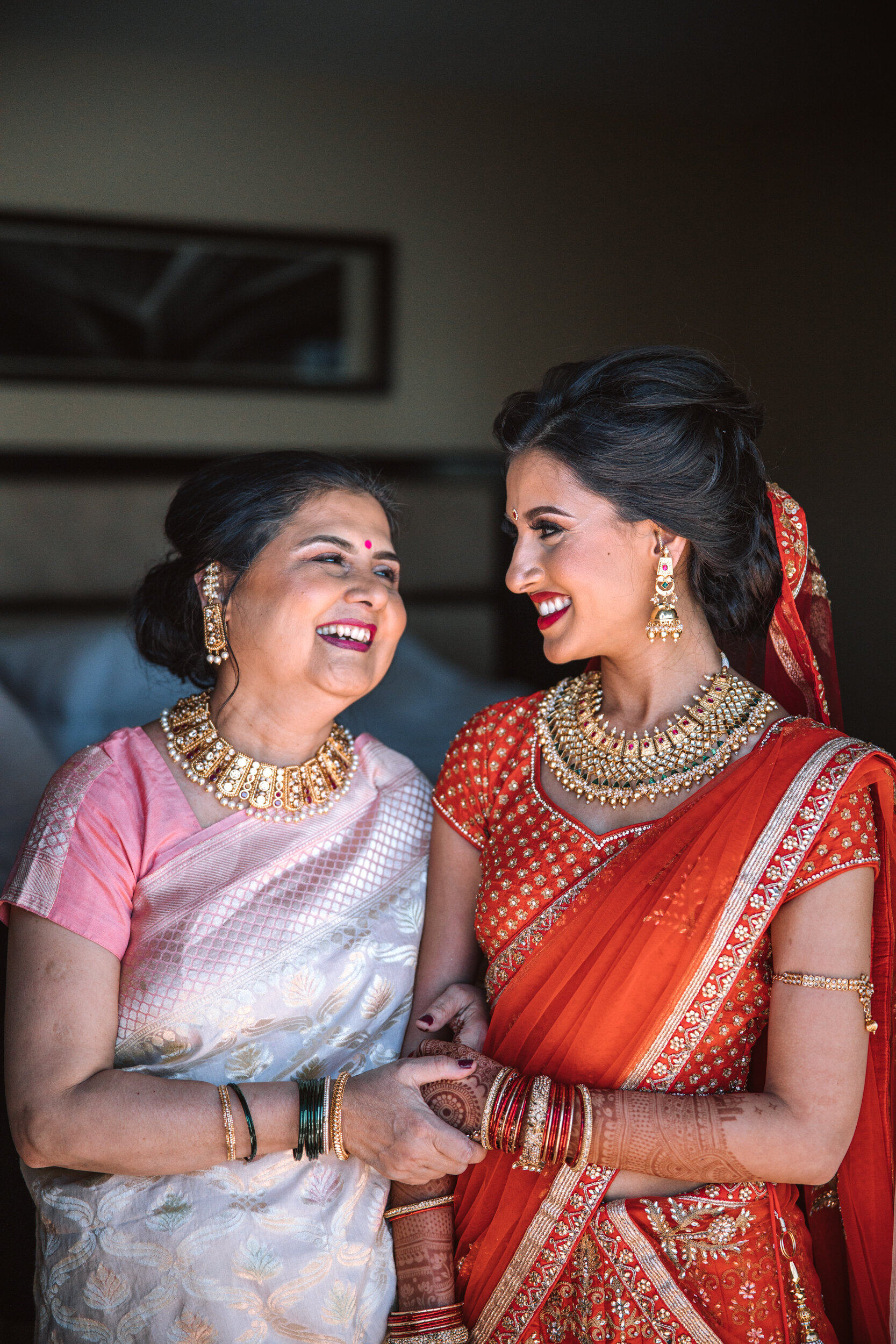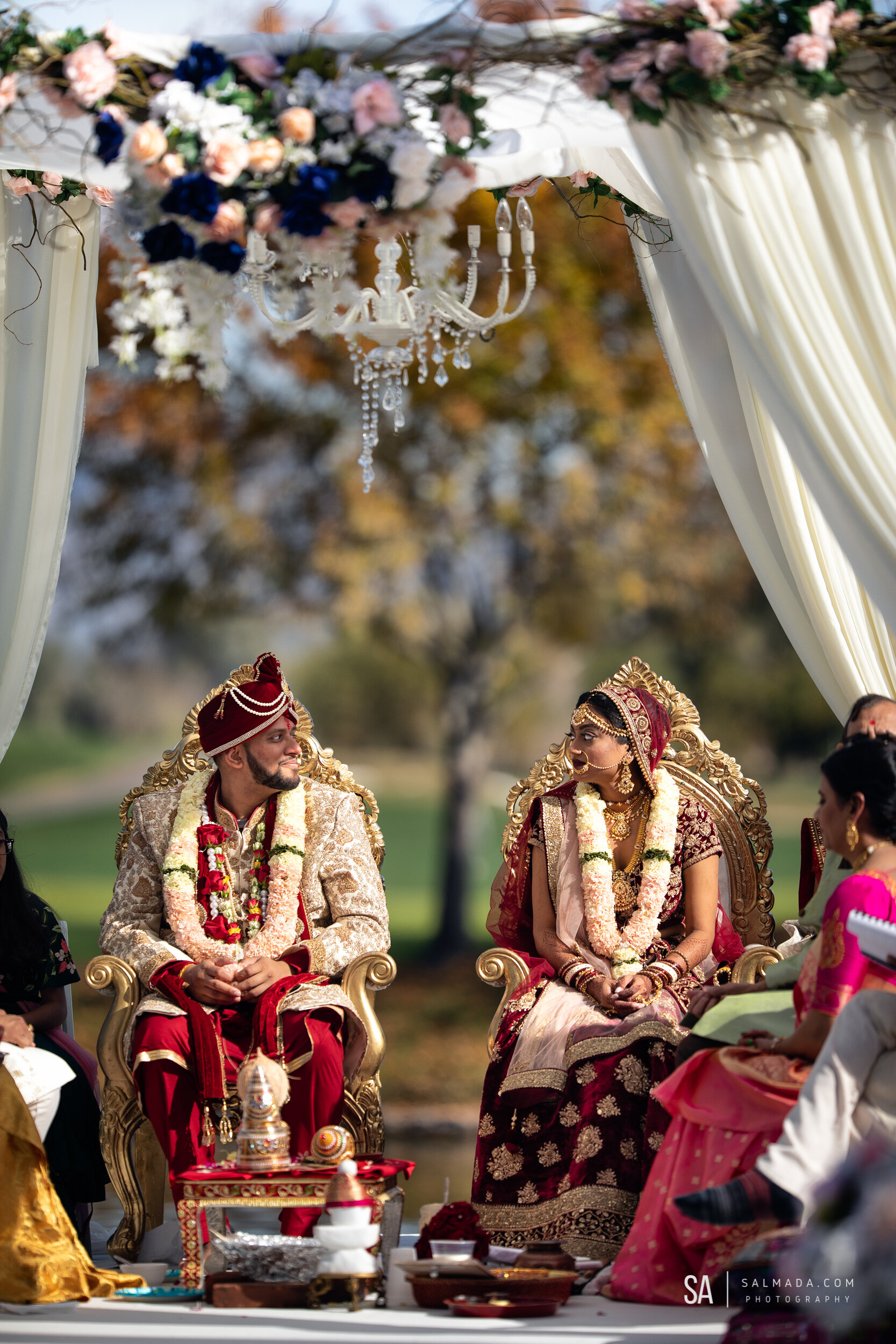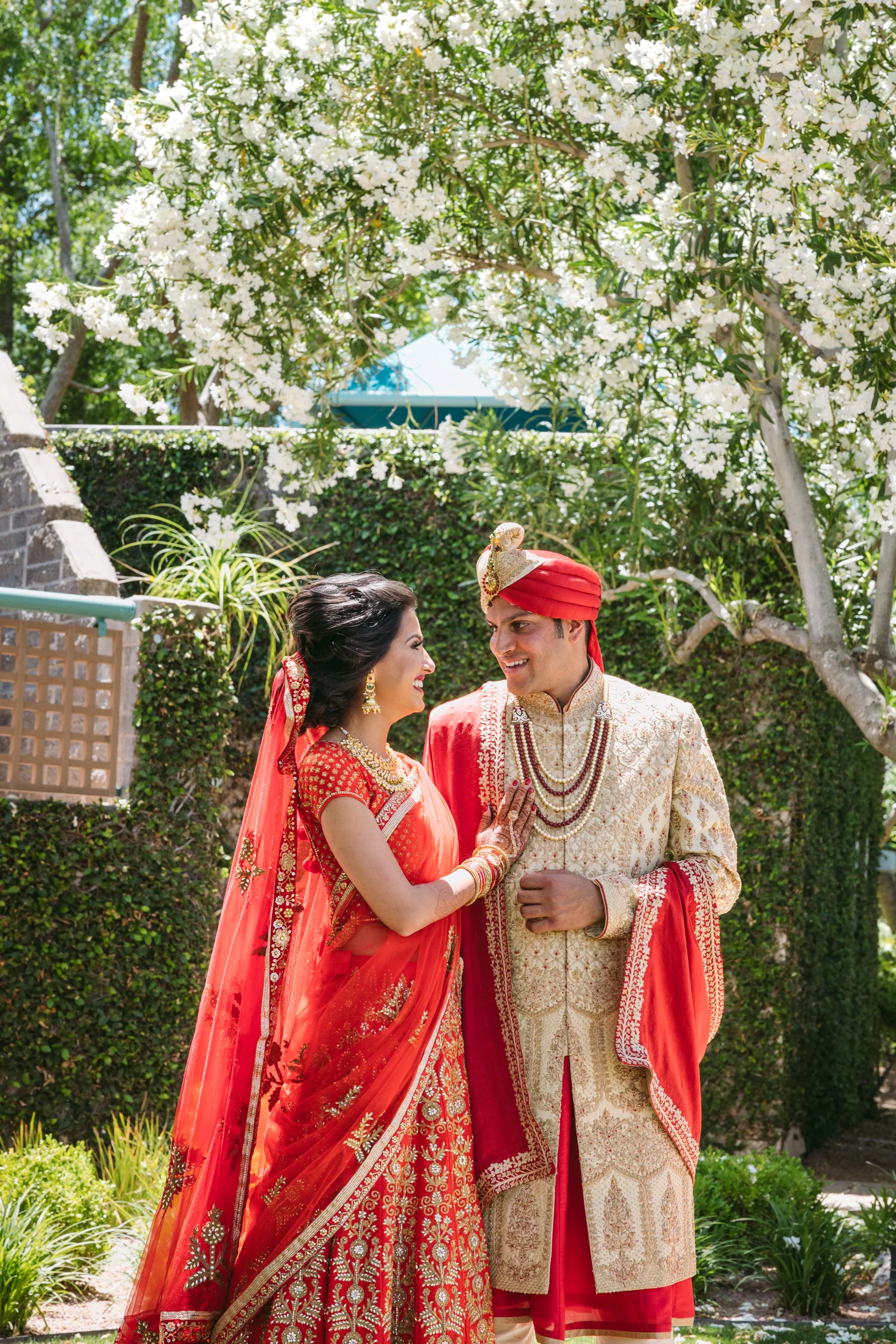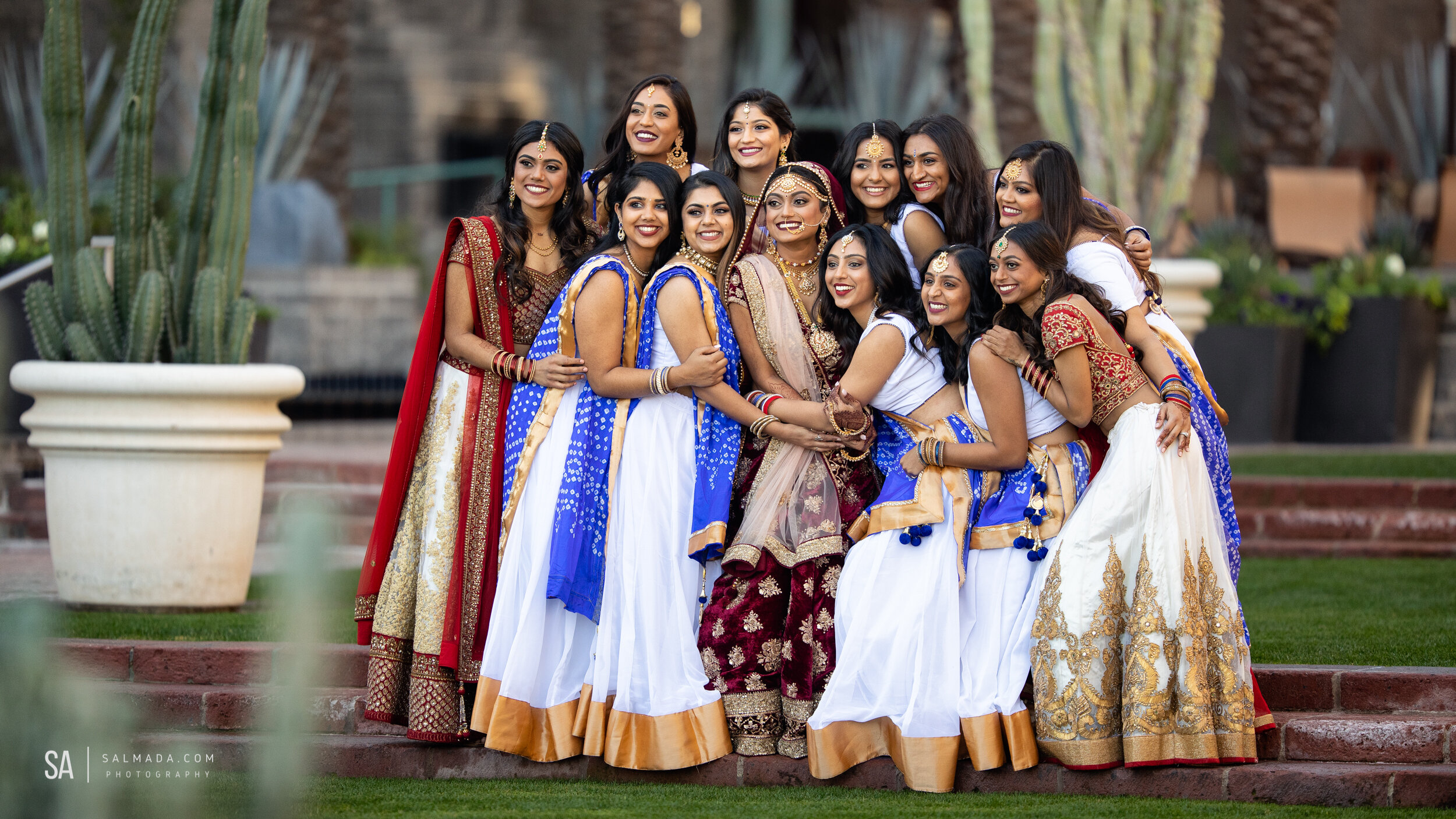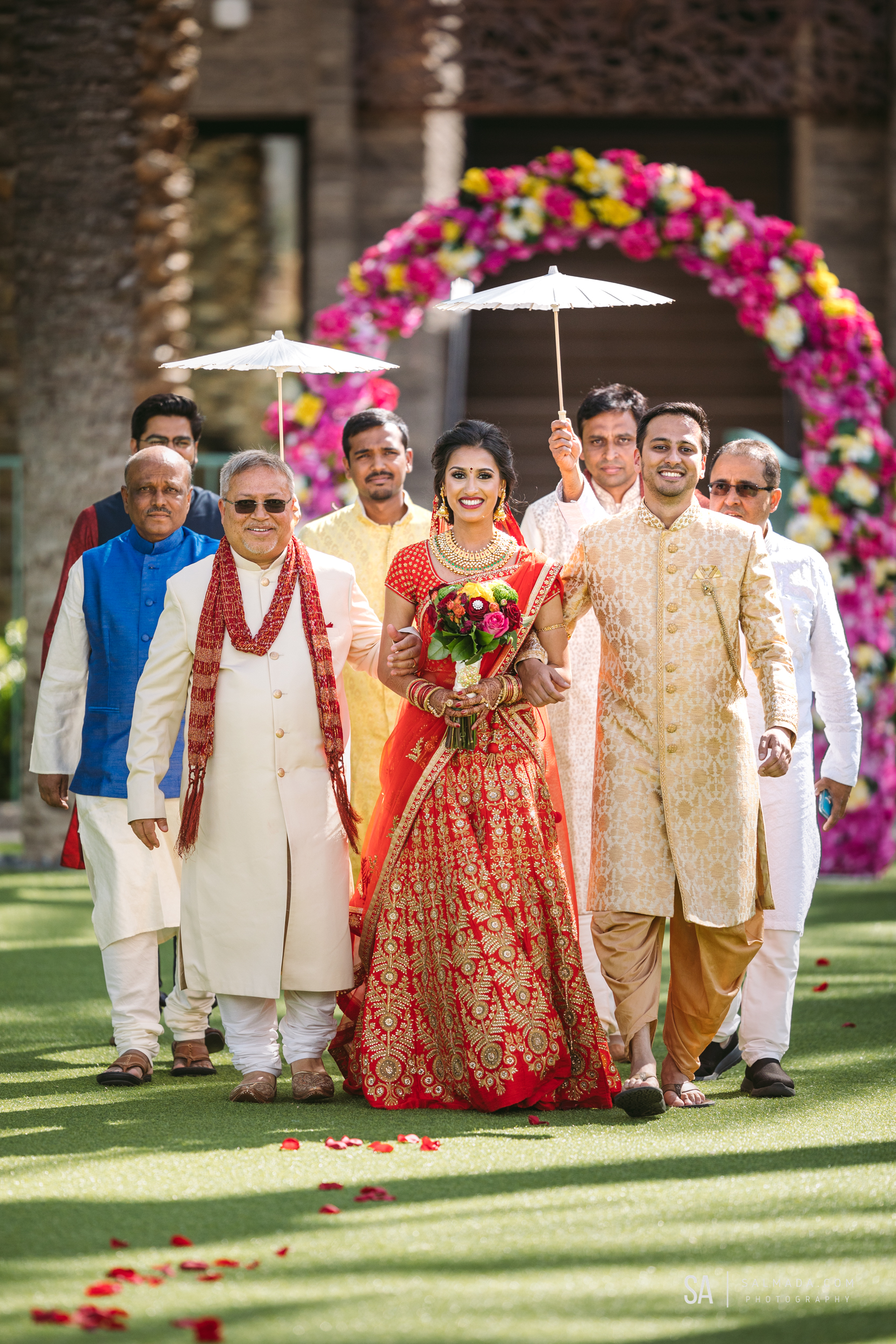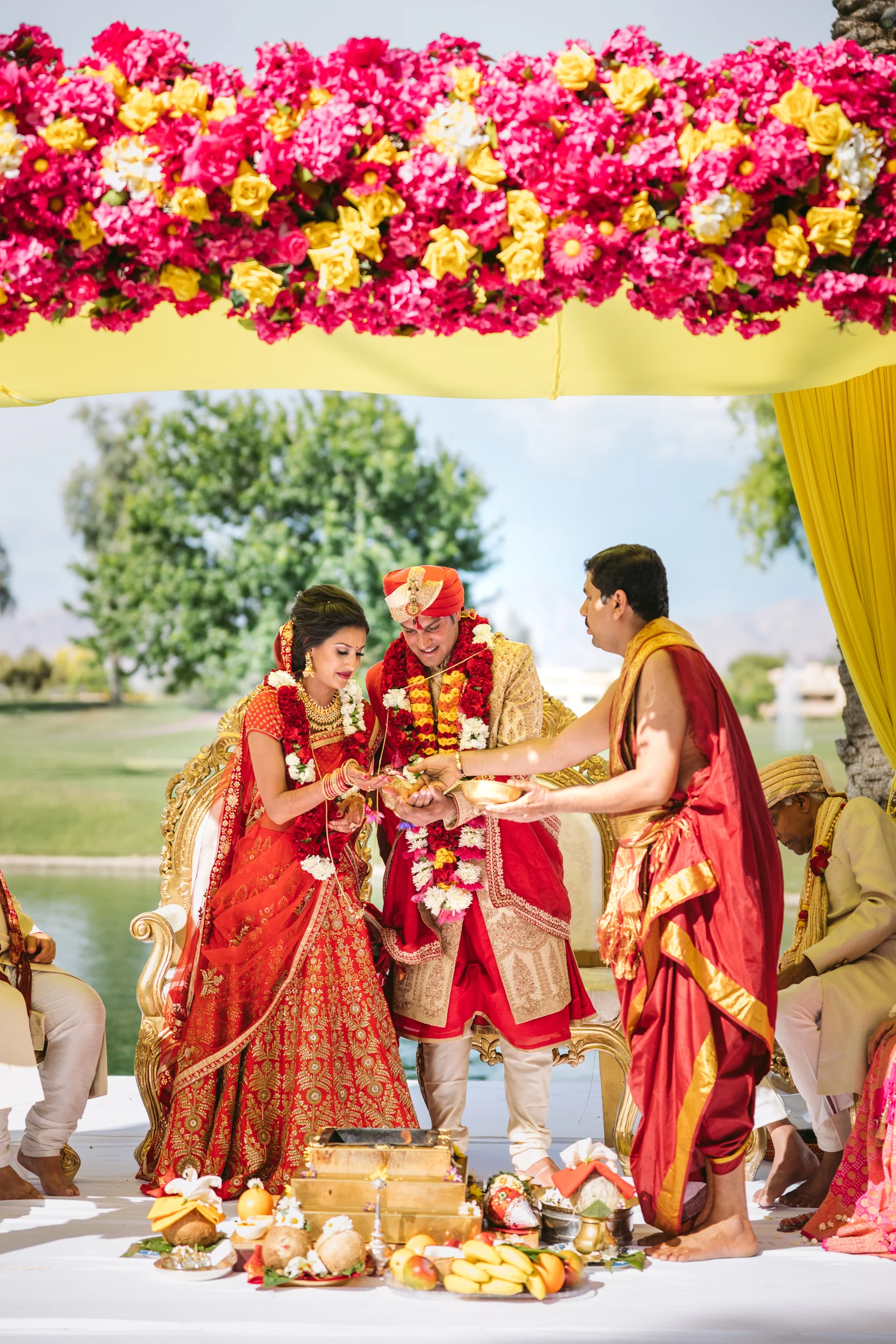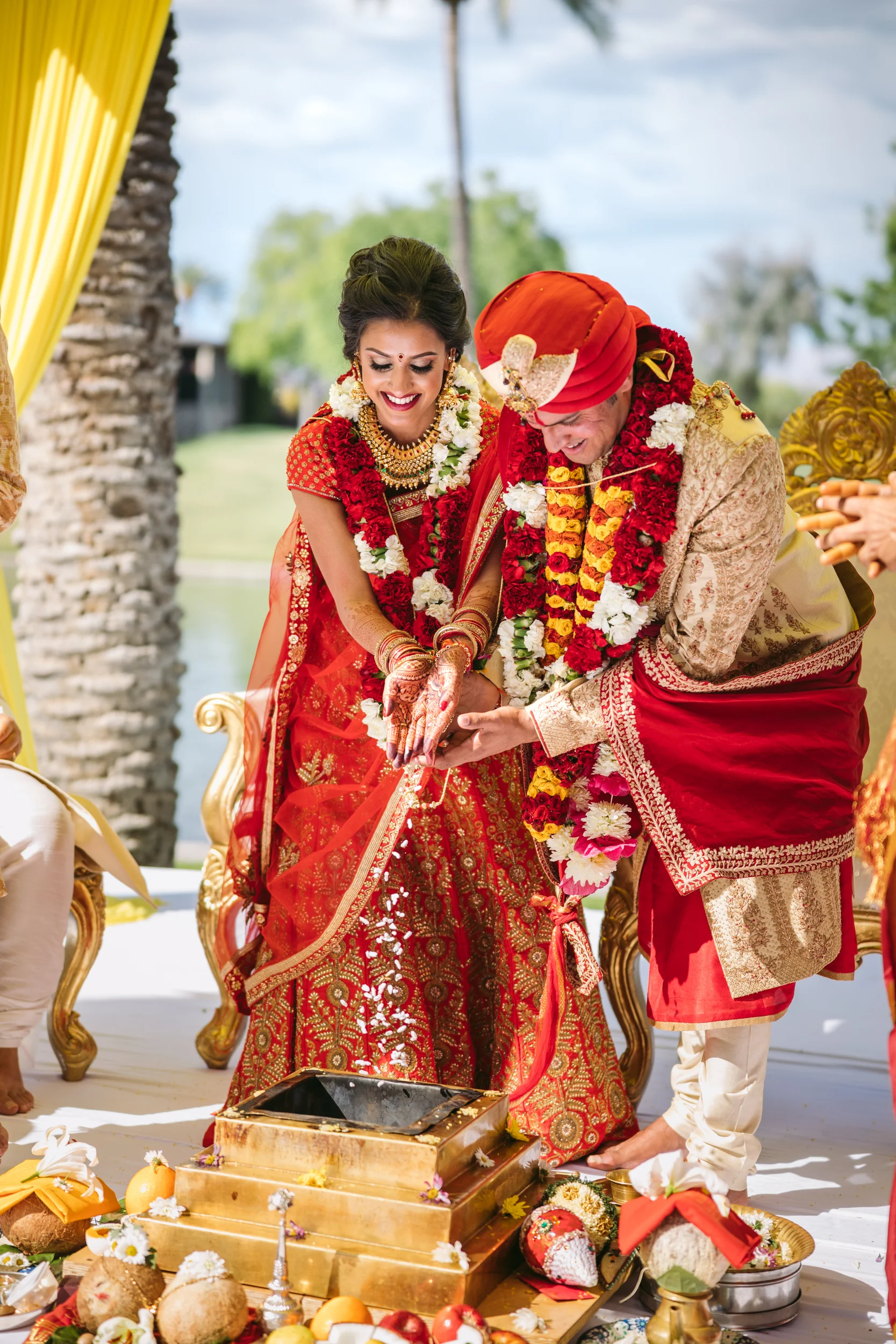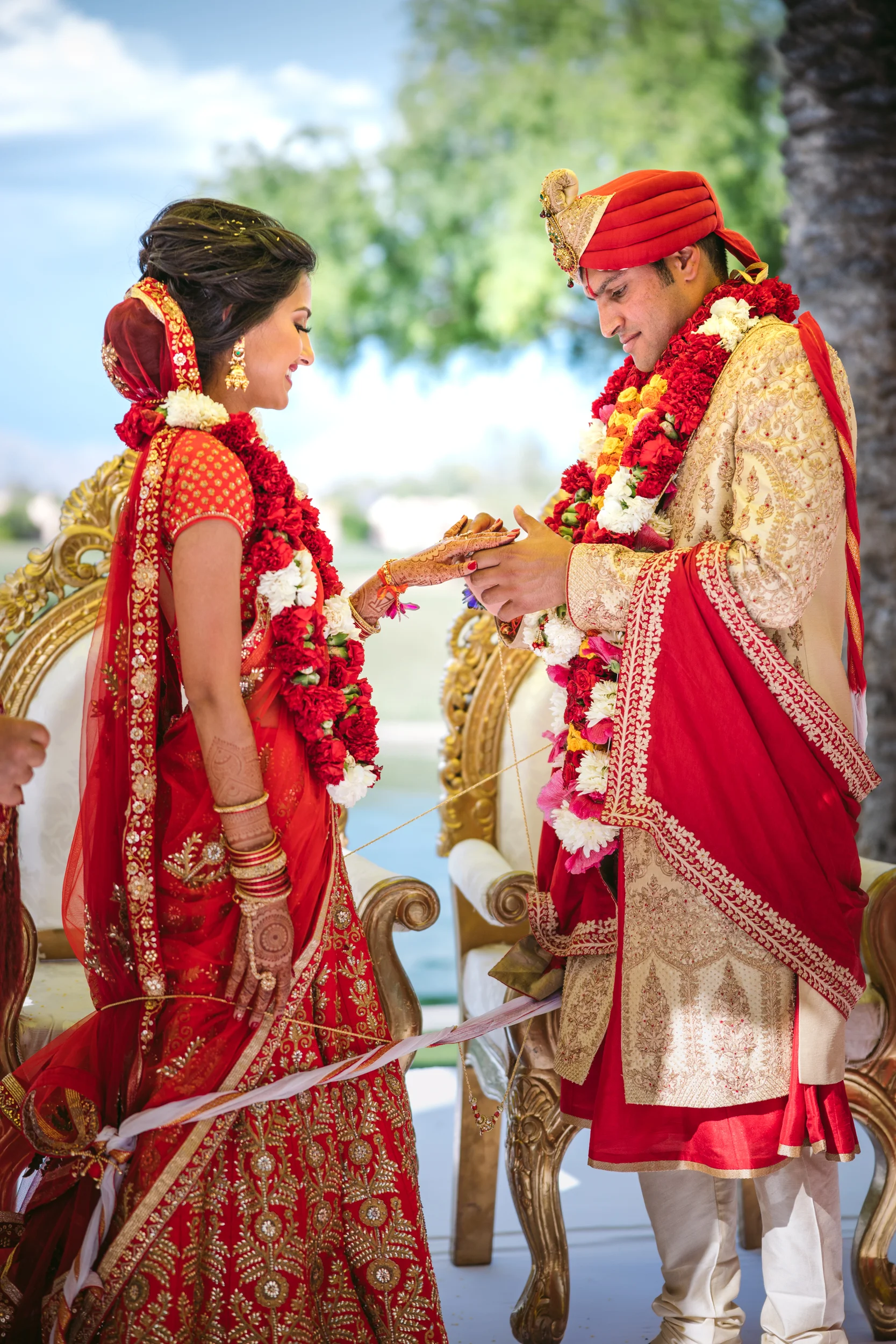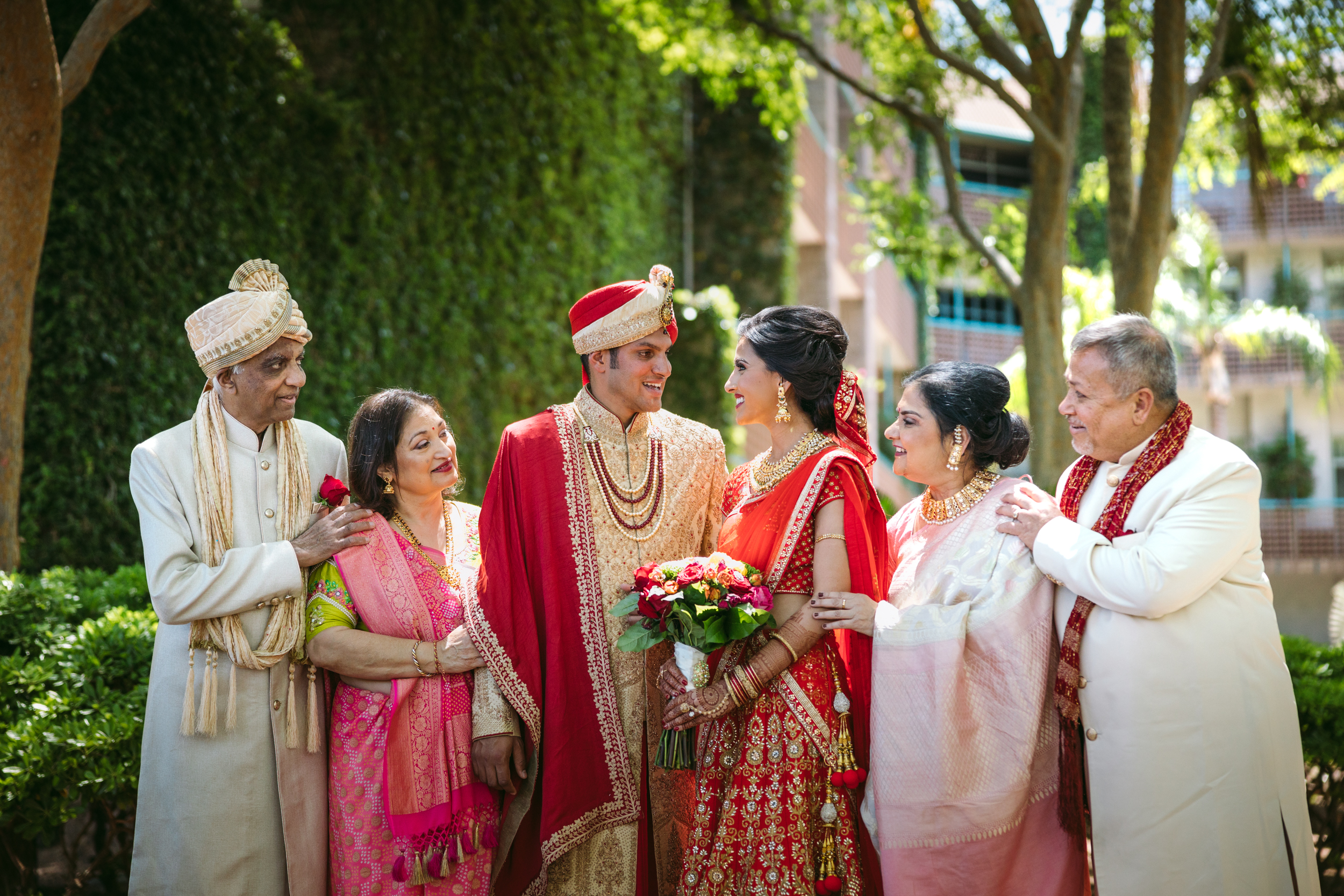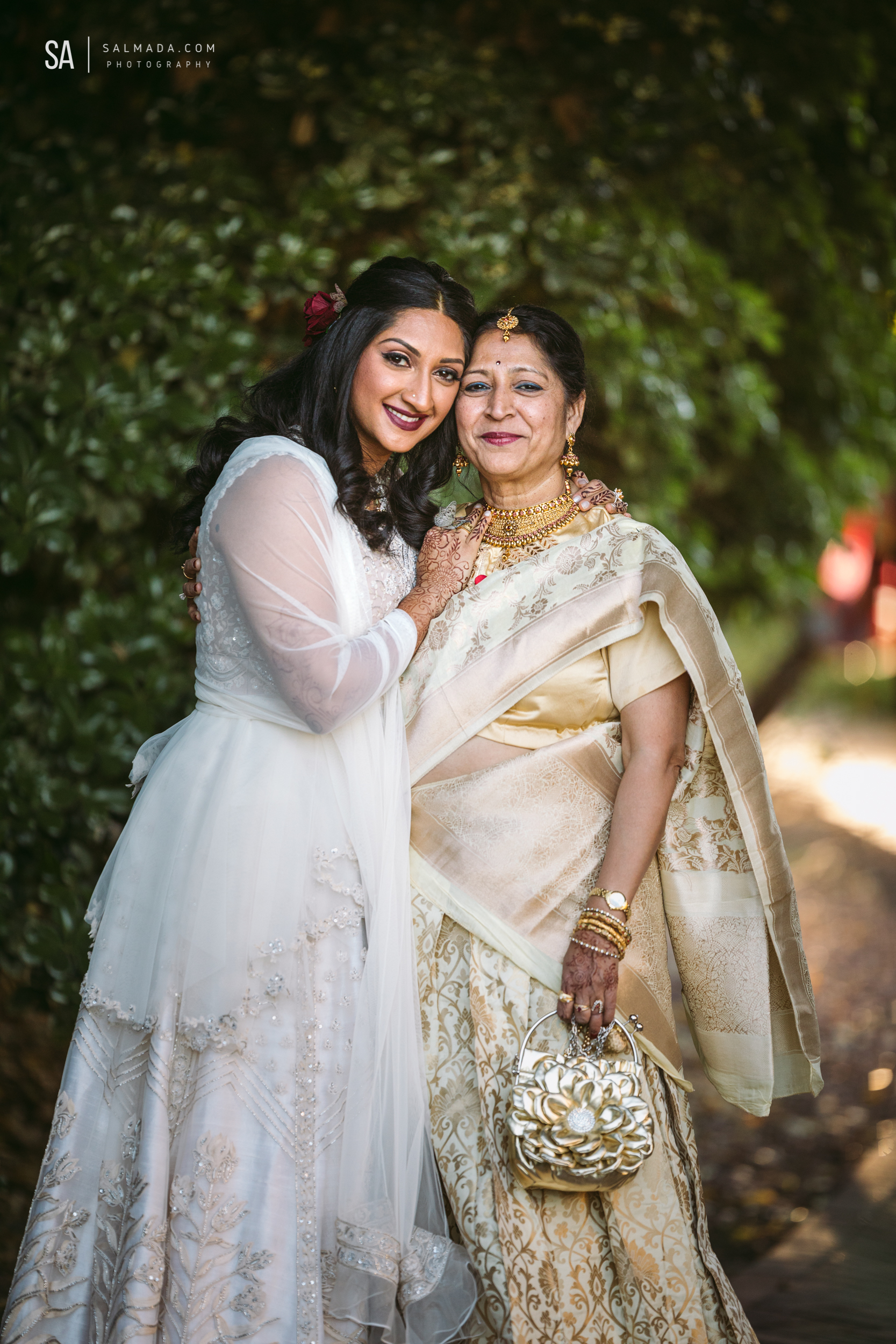Read All About It: The Delightful Details of a Hindu Wedding
When it comes to getting married, what couple genuinely wants their special day to end? There is no doubt that those who participate in a traditional Hindu wedding don’t! These elaborate, bright and tradition-packed celebrations tend to go on for a number of days before the actual wedding ceremony even begins. While Indian culture tends to practice several different religions, including Catholicism, Buddhism, Islam, and much more, the religion that seems to shine brightest in the wedding scene is Hinduism. It’s not hard to see why. The myriad of traditional and elegant ceremonies that make up a Hindu wedding not only brings the families of the bride and groom closer together, but also ensures that no one leaves the festivities without having a good time. Thanks to the fact that many variations of Hindu traditions have been blended into the Indian culture, even those who do not practice Hinduism will take the opportunity to borrow some of the ceremonies and incorporate them into their special day.
Hyatt Regency Scottsdale
A few examples of these must-have ceremonies that can be seen before the wedding include: the Haldi - which is a purification of the couple with a paste made of Turmeric powder, the Mehndi - which means the time when the bride is decorated with intricate and beautiful Henna designs, and the Sangeet - which is a celebration that takes place about a day before the wedding. This is when family and friends come together to dance and eat delicious food in an exciting pre-wedding celebration. While each one of the mentioned events is wonderful in their own, together they lead up to the most important day - the wedding day, where a beautiful celebration of the joined couple can commence. On this day, breathtaking moments of culture, religion, and unity make up the perfect event to kick off a bride and groom’s new life together.
Now, let’s dive into all of the separate events that make up a Hindu wedding day.
Bride and Groom Preparation
Just like many traditional weddings around the world, Hindu wedding couples tend to prepare for their special day separately. However, this prep time can vary in the fact that it may take closer to 3-4 hours for everyone to get ready as opposed to just one or two. This could have something to do with the fact that, truthfully, the preparation for the bride begins a couple days before the wedding with Mehndi, which is when she and all her female friends and family members gather together in the bride’s home to apply intricate Henna. Once the actual wedding day arrives, outfits, makeup, and hair will be done like most weddings. However, the details are very important, so every little thing will take time to make it perfect!
Unlike traditional American weddings where the bride wears white and the groom is decked out in a tuxedo, Hindu couples are usually covered in colorful fabrics and gold jewelry. It is not out of the ordinary for the bride to have multiple dresses for all of the different ceremonies, however for the wedding itself, the traditional color is either red or pink. Dressed in a long skirt with a matching top and scarf, the bride’s attire is called a Lehenga and she will typically have a beautiful headpiece to match. The groom will wear a Kafni, a long shirt that extends past the knees and some Pijamo leggings. To tie the look together, some grooms may also wear an elaborate and beautiful turban to complete the outfit.
The Beauty is in the Details (Ceremony Site)
There is no doubt that weddings are all about the details when it comes to making the bride and groom’s day special. Hindu weddings are no exception and the wedding site is typically, decked out from floor to rafters with elaborate decorations. The decor is usually comprised of floral designs, ornate furniture, statues of beloved deities, candles, chandeliers, bright fabrics, and much more! While the idea is to make the entire wedding location elaborate, there is one area in particular where much of the focus and attention will go.
The main centerpiece of the wedding ceremony is known as the mandap (or altar) and it is where the couple will actually perform the wedding nuptials. This location is where much of the decorations will reside as it is the primary setting for everything that will take place during the ceremony. Because there are so many details in a Hindu wedding, many couples will opt to have a photographer duo in order to capture as much of their day as possible; one to focus on the main ceremony itself, and the other to focus on photographing all of the little details that go into the decor and set up. Without this extra help, one photographer would most likely miss a lot of important moments and cherished features of the wedding.
Where it all Happens (the Mandap)
Let’s spend a little bit more time on the importance of the altar, or Mandap, of a Hindu wedding. As mentioned before, this location is the centerpiece for the wedding decor and serves as the stage for where the ceremony and all the Indian wedding rituals will take place. In Hindi, the word mandap translates to “a covered structure with pillars” and while it sounds simple, the structure is far from it. Because of the religious offerings and rituals that are performed by the priests on this structure, no shoes are allowed onto the Mandap at any time during the ceremony.
Hyatt Gainey Ranch
Each of the four pillars holding up the Mandap represents the four parents who worked hard to raise their children into the best people possible. Raised up onto a platform, the Mandap allows every guest a clear view of the couple from the comfort of their seats and almost adds an even more reverent feeling to the ceremony. The couple are elevated and on “Cloud 9” as they join their lives to one another through a number of different traditions that have been cherished for centuries. Beautiful flowers surround the pillars, garlands of mango and banana leaves adding a wild feel to the indoors. Pots of water catch the light and statues of deities (one of which is usually Ganesh, the Elephant god of beginnings, good fortune, and the remover of obstacles) make the ceremony site breathtaking. As well, a sacred fire is located on the Mandap so that the priest and couple can provide religious offerings to the flames throughout the ceremony. Without a doubt, the Mandap is an integral piece to the overall success and beauty of a Hindu wedding.
The First Look
Although this tradition is seen more often in American weddings, some Indian couples may opt for having a first look meeting. These opportunities allow for a very personal and intimate moment between the bride and groom before the flurry of wedding activities ensues. In a moment of silence and bliss, a couple can take each other in and photographers have a chance to capture tears and sweet kisses away from everything else.
Although some couples may want to save their first time seeing each other for their meeting at the altar, a first look can bring out some of the most emotional moments of the entire day. It also creates the perfect time to fit in a small couple’s photo shoot before the ceremony if time allows, providing the bride and groom an opportunity to be fresh and at their very best for these photos. Additionally, capturing these important shots during a first look allows for more time to photograph the family before the reception without them having to feel rushed. Once the first look has taken place, everyone can move into their places in order to get the big day officially started!
Here Comes the Groom (All About the Baraat)
To kick the festivities off in a Hindu and Sikh wedding, the groom will be led to the wedding venue with a processional and usually atop a regal steed. Typically, the animal used will be a white horse and is known as a ghodi. A few other options that have been utilized in the past are camels, impressive vehicles, or a rickshaw. Besides the transportation, the Baraat is made up of family members, the groomsmen, and friends (also called baraatis). The entire pace of the wedding day is set up by this activity alone, based on the music used and the upbeat tempo that the party is moving too.
As can be imagined, the excitement and anticipation is high during this time while the much-anticipated day finally begins. Perhaps the biggest question that many have in regards to the Baraat has to do with the bride. Where is she during this ceremony? More often than not, she is secretly watching from afar! She cannot participate because traditionally the Baraat is a ceremony specifically designed to welcome the groom and his family to the wedding location.
Baraat Hyatt Scottsdale AZ
A Coming Together (the Milni)
There is a Punjabi tradition that has been adopted by Hindu weddings known as the Milni. Composed from the Hindu word “milan”, this ceremony name was derived from a Sanskrit expression that means “a coming together”. In this ceremony, which takes place before the Baraat, the two fathers from each respective family come to meet as a show of union between their houses. As part of this bonding tradition, the male family members (particularly the fathers) will exchange garlands, and may even attempt to lift each other up as a fun little challenge to see who can accomplish the feat first!
Once the Milni is finished and the groom has made his way through the Baraat procession, the groom will be greeted by the bride’s family and friends. At that time, the bride’s mother will offer her soon to be son-in-law sweets while applying a mark on his forehead known as the tilaka, which is the first action in performing the ceremony of light (called the Arti). When this ritual is complete, the groom will be escorted to the Mandap to await his beautiful bride.
Let Nothing Come Between Us (Ganesha Puja Ceremony)
Now that the groom has reached the Mandap, it will be time for the priest to invoke the blessing of Lord Ganesh before the wedding rituals begin. This puja, or ceremony, is important for a Hindu wedding, as it is performed with the intention of bestowing good luck upon the couple and their families, in order to ward off any obstacles or hindrance that may get in their way as the couple sets out on their new life together. Interestingly enough, while no Hindu wedding would be complete without the Ganesh Puja, many auspicious ceremonies in the Hindu religion will not commence without a prayer to Lord Ganesh. There is no doubt that this particular god is extremely important to the culture surrounding this huge life-changing event.
Here Comes the Bride (Kanya Aagaman)
The wedding site has been blessed, everyone is waiting breathlessly, and now, it is time for the bride herself to arrive. Although some brides may choose to meet her groom before the wedding begins for that first look event, most of the time, this ceremony is the bride’s first appearance to anyone but her female family. Once the bride reaches the Mandap, it is time for the official wedding ceremony to begin. The bride is usually escorted to the structure by her maternal aunt and uncle, which signifies the acceptance of the union from the maternal side of the family. Additionally, the bride may be escorted in by her sisters, cousins, and friends, depending on which part of India the bride’s family is from. Not only is such a tradition a wonderful way to get family further involved in the union of the couple, but having family involved also shows their support and love for the bride as she makes the journey to her groom.
The Reveal (Muhurtham)
Finally, the bride has reached the Mandap and the ceremony can commence, right? Not quite! There are still a couple of rituals set in place that aid in making this joining of bride and groom all the more special. During the Muhurtham, the couple will see each other officially for the first time -regardless of whether they did a first look or not.
Where the groom sits on the Mandap separates him from where the bride is located by a bright and beautiful cloth, known as an antarpat. The use of this auspicious cloth is to symbolize the bride and groom’s individual lives before their marriage. At the time of her arrival, the bride will not be able to actually look into her groom’s eyes until she has been seated next to him and the ceremony has concluded. During the designated moment, the antarpat will be lowered and the symbolism of the couple’s coming together will begin.
Marriage Brings Us Together (Varmala or Jaimala ceremony)
Now that the cloth has been removed, the bride and groom can stare lovingly at one another, signaling that the commencement of their wedding can proceed as planned. To further understand what this particular ceremony is all about, we must break down the name Varmala, with marla meaning “garland” in Hindi. Presenting each other with beautiful flower garlands, the exchange between bride and groom will represent the acceptance and union of their ceremony. Traditionally, the bride is the first one to present her garland to her partner, followed by the groom’s offering of his garland. Once both garlands have been exchanged, the couple can then take their seats on the Mandap besides each other.
Parental Blessings Received (Kanyadaan)
Perhaps the most difficult part for any parent during their daughter’s wedding is the moment when they are to give the bride away to her new husband. This is a common tradition in most weddings, but for a Hindu wedding, it is a bit more involved. At the time of the Kanyadaan (meaning “giving away the bride” in Sanskrit), the bride’s parents will approach the couple, each with their own tasks to perform.
The bride’s father will take her hand and place it into the right hand of her groom, thus signifying the father’s acceptance of the groom and his care over the bride. While their hands are still joined, the mother of the bride will pour sacred water over the palm of her husband, allowing it to fall through his fingers and onto the joined hands of the bride and groom.
Light the Fire in My Heart (Vivaah Homa)
Once the Kanyadaan has come to a close, the sacred fire will be lit; signifying the start of the Vivaah Homa ceremony. This particular section of the wedding is designated to be a purification moment for all of the upcoming ceremonies that follow. The priest will contain this fire in a copper bowl known as a kund and use it throughout the remainder of the wedding ceremony.
Family Blessings Received ( Laaja Homam)
Translated from Sanskrit origins, the Laaja Homam means “the offering of puffed rice to the sacred fire.” Taking place towards the mid-end of the wedding nuptials, this ritual is a way for the families of the bride and groom to offer their blessing on the union. Everyone will participate. However, the bride herself is not allowed to offer the rice with her bare hands to the fire. Because of this, she will be helped through this ceremony by her closest male relative or brother if she has one. The groom will place his hand beneath the bride’s as her brother (or other male relative) pours the rice through her fingers. A portion of the blessing will be shared with her groom as the rice makes its way into the sacred fire. Finally, the couple will circle the fire three times together, all the while feeding the fire with rice.
Tie the Knot ( Mangal Phera )
Depending on what region of India the couple is from, or what branch of Hinduism they practice, the bride and groom will continue to circle the fire for anywhere between four and seven times. The groom leads the first circle while the bride leads the final circle. Although this may seem like a drawn out ritual, each circling of the fire actually has immense significant meaning for a Hindu wedding. For example, during a Gujarati Mangal Phera, the four circles are directly related with dharma (virtue), artha (wealth), kama (family), and moksha (enlightenment). When the last circle is finally made, the couple will rush back to their seats to see who will get there first. Traditionally, the one who makes it back to their seat first will be the head of the household!
To wrap up this ceremony, the couple will go through an actual “tying the knot” ritual where the bride and groom will be connected with a scarf, called the dupatta. Typically, the bride’s dupatta, which is worn on her head, will be tied to the groom’s dupatta, which is worn over his shoulder. They are now not only connected physically, but through their fate as well.
A Necklace for the Bride ( Mangalsutra )
Before the ring exchange, the groom performs an extra ceremony with a special little gift for his beautiful bride. The mangalsutra is a necklace that the groom places around the bride’s neck while he recites Vedic mantras in order to symbolize that she is now a married woman.
The Ring Exchange
The ring exchange is a time where both parties of the couple can commit to supporting each other through all of life’s challenges and struggles with the promise of a ring to go along with their vows. These commitments of unconditional love through times of happiness and sorrow are similar to what we see in most traditional weddings all over the world.
Vows from the Heart (Saptapadi)
After the Mangalsutra has been tied and the rings have been exchanged, the vows are solidified through the ceremony of the saptapadi, or “seven steps.” During this part of the wedding ceremony, the bride and groom take seven steps together. Each step taken represents one of the seven vows and promises that they make to each other. The priest recites mantras that are specific to each one of the steps as the bride and groom walk together. Although the bride and groom may have already given simple vows of their own during the ring exchange, at this time, they will recite vows based in Hindu tradition, and between each one, they will kick a small item (such as a stone or betel nut) off a pile of rice. Some couples may opt to just touch the item with their big toe as opposed to kicking it off the pile of rice. Whichever method they decide to use, this tradition is definitely a physical embodiment of the huge commitment a journey of marriage takes.
Sweet Eating (Kansar Bhakshan)
Similar to traditional American weddings where the bride and groom feed each other cake, in a Hindu wedding the Kansar Bhakshan is an exchange of sweets between the bride and groom. Usually, the couple will fast on the day of their wedding, only breaking it with this tradition. For those who practice this tradition, the Kansar Bhakshan is an exciting time indeed as they finally get to eat; and something delicious at that! Such a practice is a wonderful way for the bride and groom to share their very first meal together as a married couple.
I Pronounce You Husband and Wife (Ashirwad)
The final, official, step of a Hindu wedding is the Ashirwad, translating from Sanskrit to mean “blessings.” All of the elders that are part of both families play an extremely important role in this ceremony, as their wisdom and love helps to build the structure of a Hindu family. Once the priest has declared the couple as husband and wife, the newly married pair will take a bow to the crowd from the Mandap to thank everyone for attending as well as accept them as witnesses to their union.
As the couple makes their way through the crowd on their way out of the ceremony site, they will seek Ashirwad from their parents (usually by touching their parents’ feet or embracing in a hug to show respect), grandparents, and elderly members of their family. Walking through the crowd on their way out of the wedding site, the guests will shower them with something such as flower petals or rice in order to offer their own Ashirward to the newlyweds. This ceremony is a wonderful way for the couple to celebrate their new beginning together.
The ceremony has ended, but the fun will continue! Let’s take a look at what other unique and interesting Indian wedding traditions make up the culture of Hindu Weddings.
The Send Off (Vidaai)
While the couple is leaving the ceremony site, just like in most traditional weddings, friends and family will gather to see the newlyweds off. Specifically, the bride’s parents will be involved to ensure a proper sendoff for their daughter, as this moment symbolizes the bride’s departure from her own family to start a new life of living with her husband.
Gondola Ride at the Hyatt Regency Scottsdale
The Hidden Shoes ( Joota Chupai)
A fun tradition that is unique to Hindu weddings is one that involves the groom’s shoes. While he is busy getting married, most likely some members of the bride’s family were hard at work making his shoes disappear. Because the groom must remove his shoes before the ceremony (as they can’t be worn on the Mandap), no one is around to keep them guarded! It’s tradition for the shoes to be captured and hidden somewhere as a show of acceptance and open hearts to the joining of the groom to the bride’s family.
This fun game usually precedes the recession and negotiations with the groom will take place for the shoes to be returned so that he can leave with his beautiful bride! A reward will usually be offered for the missing shoes and there is no doubt that much fun and laughter is had at seeing how long it will take for the shoes to show up!
Family Formals
When it comes to setting up the wedding day plan, traditionally the family pictures will be taken right after the ceremony before everyone makes their way to the reception area. This plan is the same for Hindu weddings and usually, the best location to capture these photos is right on the Mandap, where the bride and groom can be in the center and the family can gather around for photos to be taken.
Couple’s Session
Once the family photos have been taken and all family members have been guided to the reception area, the newlyweds can now have their own time to shine. If a first look was utilized before the wedding, this time after family photographs is perfect for maybe sneaking in a couple of extra photos that capture the bride and groom’s overwhelming love and excitement now that they are a married couple. If there wasn’t a first look, the couple’s session is when all of the photos of just the bride and groom can be captured.
Reception Change
Because Hindu weddings tend to have a lot of outfit changes between all of the different ceremonies, most likely the bride and groom will opt into an outfit change after their photos and before entering the reception area. This outfit change may be something as simple as adding different jewelry or some more comfortable shoes, or it could be a completely new Sari and Kafni.
Arizona Grand Resort
Reception Details/ Performances
When it comes to the reception, Hindu wedding goers hold nothing back! Similar to many other cultures, the reception is a time of celebration and socialization where the families and friends of the couple can come together to have a wonderful time and set the newlywed’s married journey off on the right foot. On average, the reception may have around 300-500 people and the new couple will be in the center of it all - typically on a raised stage so everyone can see them easily. Elaborate decorations, great music, photos, cake cutting, gifts, and more can be seen at a Hindu reception. There are a few other traditions are quite unique to the culture, such as throwing money at the couple while the dance in order to wish them prosperity.
Hyatt Regency Scottsdale
Another example of something that makes Hindu receptions unique would be the amount of professional dances and choreography that takes place during the celebration. Not only do friends and family members put on their own shows, it is not uncommon for the couple to have hired professional dance troupes to entertain and liven up the party even further!
During the times when people aren’t dancing, they are most likely eating. Hindu weddings are known for their good food (and amount of food), so it’s no surprise to hear that a typical Hindu reception meal can be made up of around 10 appetizers, four or five main entrees, followed by yogurt, salad, naan, and much more! Delicious sweet treats and cookies will round off the meal, but no one should worry about the food running out; there will most likely be something available even after the last person leaves the reception hall.
Conclusion
Overall, there is no doubt that the cultures of a Hindu wedding are not only beautiful and lively, but also exhilarating. It’s wonderful that so much time and detail go into making the couple of such a wedding feel supported and loved every step of the way. While the support and love for the couple during their special day can be seen across multiple cultures - there is just something about the way Indian families come together. They celebrate the joining of new lives over the course of a week with individual celebrations like the Baraat, Mehndi and mixed social events like the wedding reception. It is special, beautiful, and an event that is not easily forgotten.


